|
Explore the Secrets of the Paranormal in:
THE PHYSICS OF THE PARANORMAL |
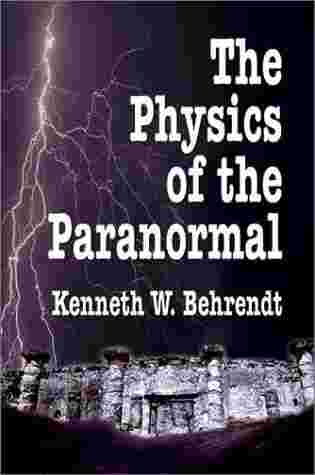
|
|
Find Answers to the UFO Mystery in:
SECRETS OF UFO TECHNOLOGY |
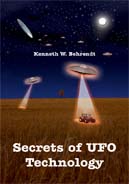
|
|
Find EVEN MORE Answers to the UFO Mystery in:
THE HOW AND WHY OF UFOS |

|
|
Answers for the MOST serious of ufologists:
THE NEW SCIENCE OF THE UFO |
|
|
Know Tomorrow's Science Today:
ESSAYS FROM THE EDGE OF SCIENCE |
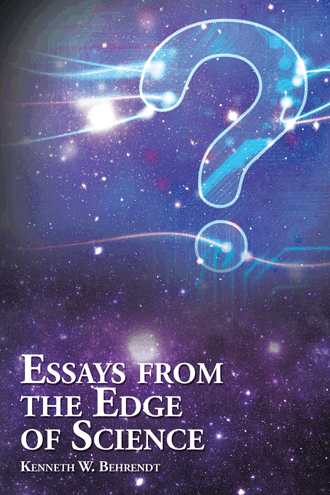
|
|
After Three Centuries, THE Solution:
THE TRIUMPHANT ORFFYREAN PERPETUAL MOTION FINALLY EXPLAINED! |

|
|
Humanity's New Physics Begins Here:
THE COMING ALTERNATIVE SCIENCE REVOLUTION |
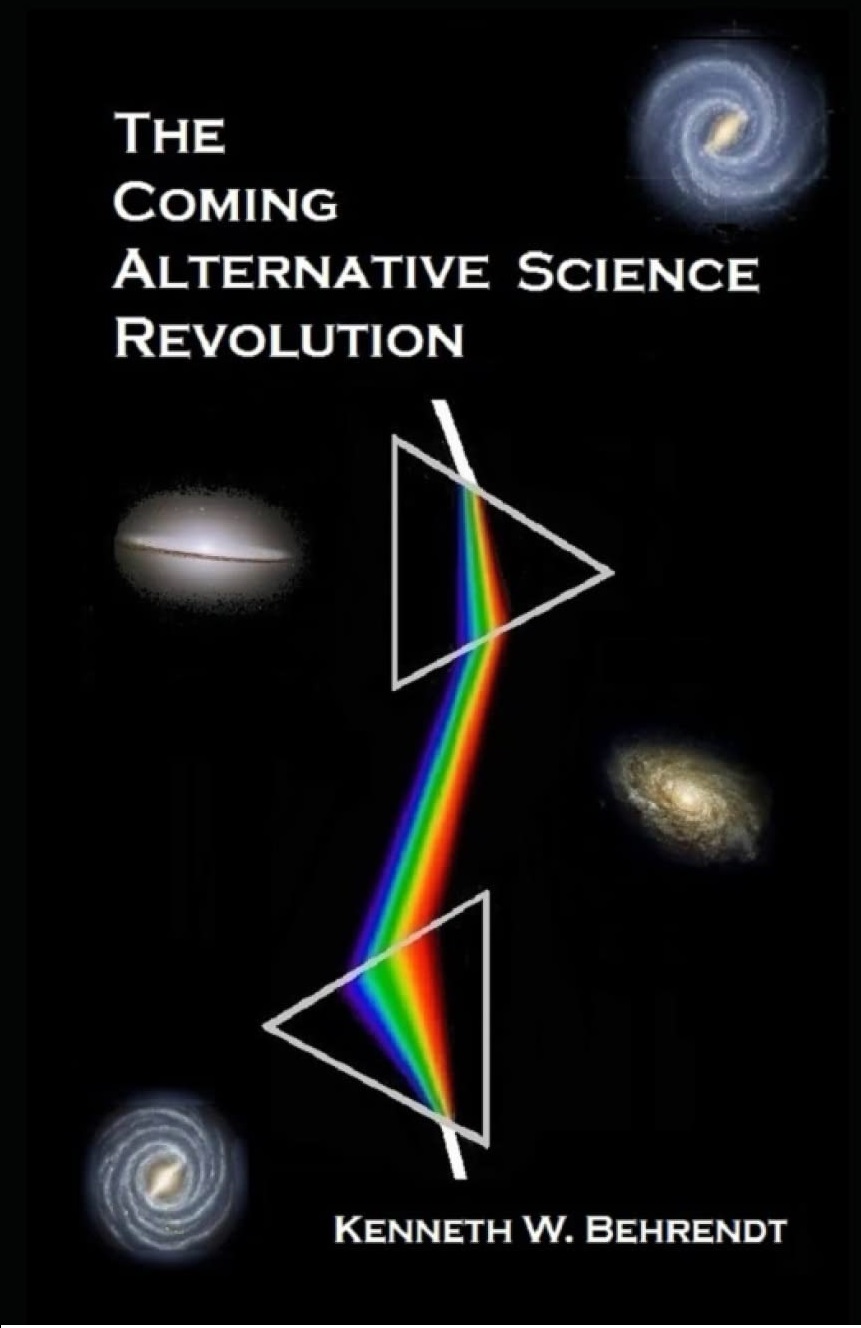
|
|
Finally Answers that Make Sense:
Answers to 101 Questions About Extraterrestrial UFOs That THEY Don't Want YOU to Know! |
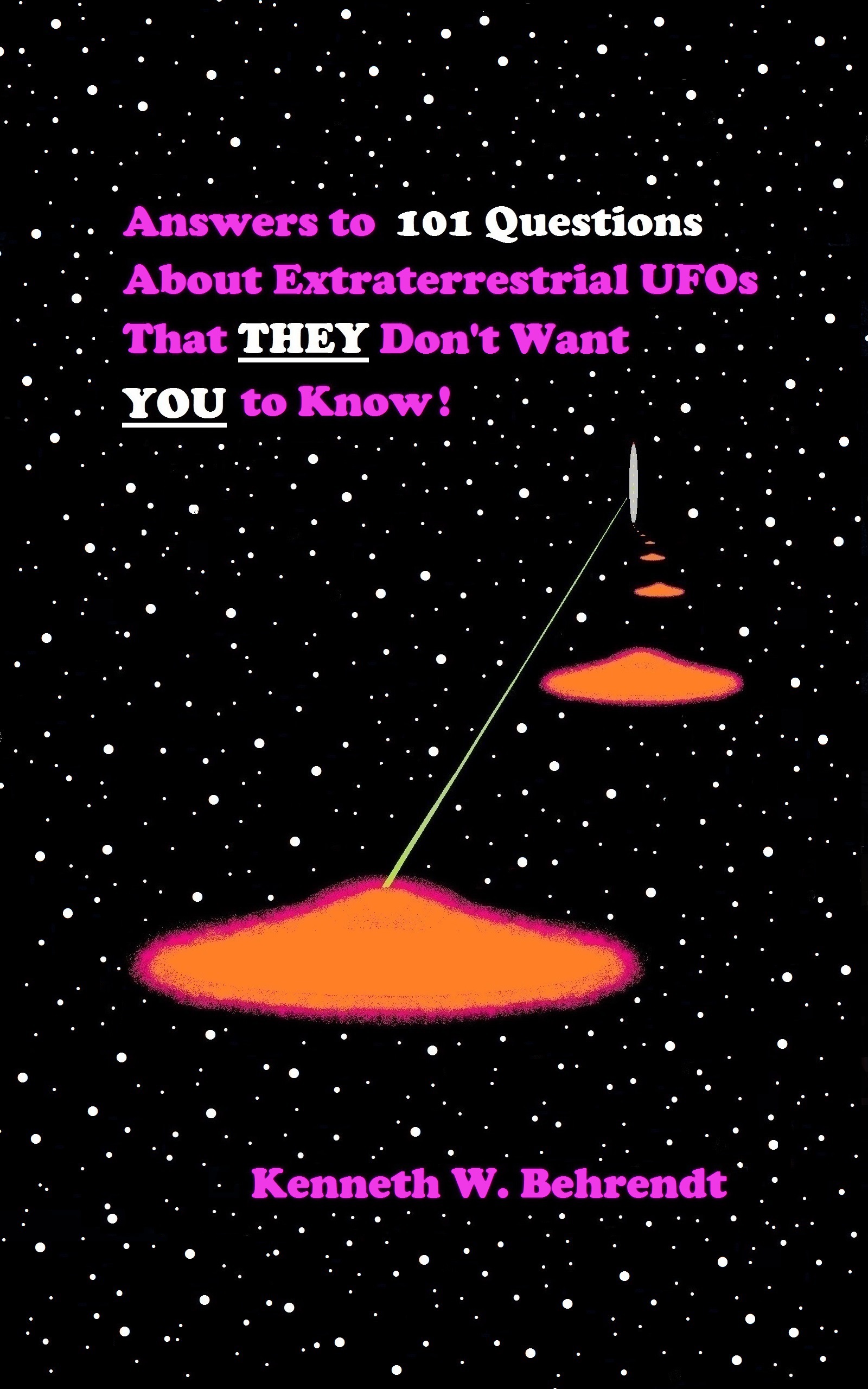
|
|
An Ultimate Structure for the Multiverse
by Kenneth W. Behrendt |

|
|
In the last five to six thousand years of recorded history, the major civilizations of our planet have produced dozens of cosmological models. Each was intended to rationalize the available observational information about our universe and each was eventually modified or even eliminated by further refined future versions. First, there were the deity based models that attributed the observable phenomena of the universe to the actions or whims of superpowerful deities. With the development of ancient geometry, measurement began to play an ever increasing role in cosmological speculation. Finally, by the end of the Middle Ages precise astronomical measurements were starting to be made and the Copernican revolution gave a fairly precise model for our solar system. With the development of the optical telescope, the true enormity of the cosmos became apparent as it was realized that our solar system is only one of a local group of hundreds of BILLIONS of such systems that form an immense "island" of stars or our home galaxy which we fondly refer to as "the Milky Way". Yet further improvements in telescopes and their placement into near Earth orbits have allowed galaxies at the very edge of observable space to be examined using other than optical frequencies of light. As more and more astronomical data accumulates, we are constantly compelled to answer certain fundamental questions. These are the same ones that have persisted throughout history: How large and old is the cosmos? Why does it have its presently observable structure? Did it always have this structure? If not, how does it change? Where did it come from? Where is it going? And, perhaps, the ultimate philosophical question: Why should there be any cosmos at all?
In this article, I shall attempt to answer some of these age old questions with yet another cosmological model. It shall draw upon what is presently known with some certainty about our universe and then extend out into a speculative realm whose verification must, unfortunately, await much future research. I will, however, try to keep my speculations to a minimum by keeping the model to be presented as physical as possible although to provide an answer for the "ultimate" philosophical question, it will be necessary to briefly enter the murky waters of the metaphysical. Before we begin our journey of exploration, we will very briefly review some of the basic concepts from our present cosmology. On any conceptual journey, it is always a good idea to know where your starting point is.
I can briefly summarize what is currently accepted cosmology by stating that it assumes that approximately 14 billion years ago, a huge black hole (a kind of "Cosmic Egg") about the size of our entire solar system suddenly, for some strange reason, became unstable and detonated with an explosion of unimaginable violence. This explosion released a dense cloud of pure energy which gradually "cooled" enough with expansion to allow a collection of hypothesized subatomic particles known as "quarks" to form. At the same time, all the known field forces of nature associated with gravity, electrical charges, magnetism, and nuclei also came into being. As cooling of this blast cloud continued over the course of additional hundreds of millions of years, larger subatomic particles such as electrons, neutrons, and protons were formed. With even further cooling and expansion, we finally had a huge cloud of individual hydrogen atoms rushing out from the epicenter of the great explosion which has come to be known as the "Big Bang" in the literature of cosmology.
Current cosmology also accepts that the original blast produced ALMOST equal quantities of each subatomic particle AND its "mirror image" counterpart known as an "anti-particle". These anti-particles are identical to normal particles except that all of their special subatomic properties, with the exception of mass, are reversed. Thus, if a certain subatomic particle spins in a certain direction, then its anti-particle will spin in in the opposite direction. Furthermore, if a particle and its anti-particle should physically collide, they instantly self-annihilate each other and disappear as their combined masses are converted into two gamma radiation photons which exit the collision site in opposite directions. This interesting detail is used to explain why we only see one type of matter in abundance in our universe. Shortly after the Big Bang occurred, all of the matter and anti-matter produced in that vast explosion destroyed each other, but because there was a SLIGHT difference in the amounts of matter and anti-mattter originally produced with the regular matter predominating, we now see an entire universe created from that small leftover quantity of unannilated regular matter!
About two billion years after the Big Bang the expanding cloud of hydrogen gas cooled to the point where mutual gravitational attraction allowed sections of it to condensed and form vast ribbon like structures of hydrogen gas. These further condensed into large swirling clouds of hydrogen that became separated from their neighboring clouds by distances of about several times their diameters. These swirling clouds became the first galaxies as the hydrogen they contained condensed under the action of mutual gravitational attraction to form stars whose energy outputs were derived from the fusion reactions of hydrogen nuclei at these stars' cores. As the "first generation" stars in one of these young galaxies continued to "burn" its hydrogen nuclei via fusion, it would produce the nuclei of heavier elements that would accumulate near the star's core. After billions of years, when the star had used up most, but NOT all, of its original hydrogen fuel, it might slowly switch over to using the helium nuclei created from the original hydrogen nuclei fusion reactions to fuel the fusion reactions going on at its core. This process would work for a while, but eventually the first generation star's energy output would drop off and the star would begin to cool off and experience a dramatic collapse and decreasse in its diameter. If the star was small to begin with, it might shrink to form a hot "blue dwarf" star. A larger first generation star would shrink, concentrate its remaining hydrogen fuel, and then, with renewed energy output, rapidly expand to become a "red giant" star after which it would shrink down into a blue dwarf star. However, if the first generation star was large enough to start, it might become a "supernova" that exploded and scattered its contents into the surrounding space. This material would provide the heavier elements needed to form the future planets that would orbit the much smaller star that would eventually form at the epicenter of the supernova explosion. Since supernova explosions are not that common, we can only surmise that first generation stars that entered the red giant phase of their existence also managed to spread heavier elements into the space surrounding them for use in forming future planetary systems.
Present cosmological theory holds that by about ten billion years ago, the galaxies were formed. About five billion years ago, the first generation stars in these galaxies had destablized, scattered heavier planet forming elements into an orbiting plane about themselves, and then went on to form the "second generation" stars that we can see, in the case of our own Milky Way galaxy, when we look up into the clear night sky of Earth. Thus, our Sun is a second generation star (a kind of large orange dwarf) and it, like the Earth and other planets in our solar system, is only about 5 billion years old.
The next problem modern cosmology must concern itself with is reliably predicting what the ultimate fate of our visible universe will be. Unlike the view of our cosmic past, the view of the future is far murkier. More theories have been advanced concerning it in the previous century then are found in perhaps any other branch of the physical sciences. While there now seems to be enough reliable data to establish the reality of a previous Big Bang, the future destiny of the cosmos is a matter of mathematical speculation based upon the available telescopic data. Previous calculations indicated that the galaxies were moving away from the epicenter of the Big Bang with sufficient momentum to overcome their mutual gravitational attraction for each other in which case the visible universe would continue to expand until all galaxies radiated off their electromagnetic energies, cooled, and then collapsed down to form a vast collection of dead black holes distributed randomly throughout an infinite void. During the 1980's evidence of the existence of a mysterious "dark matter" surfaced indicating that perhaps as much as 90% of the matter in the universe is not part of the glowing discs we generally think of as a galaxies, but rather is drifting along with a galaxy in a region of space near it, but outside of its main array of luminous star systems. Calculations based on the ESTIMATED new resulting masses of the galaxies then indicated they should be slowing down with respect to each other so that they would stop and then reverse the initial expansion caused by the Big Bang. It this scenario, the visible universe will eventually (in several tens of billions of years from now!) collapses back into itself to form a massive black hole again. The latest refinement of the our present cosmology was announced only last year (2002) by two British astrophysicists. According to their view, our "present" Big Bang is only the latest in an infinite series of Big Bangs! They feel that we inhabit a sort of dynamic Steady State universe which is nothing more than an infinitely Oscillating Big Bang universe. That is, the universe starts with a Big Bang, expands and forms star laden galaxies, stops expanding, and then collapses back and destroys all galaxies during its "Big Crunch" phase. At the end of the Big Crunch phase, a new Cosmic Egg forms which then undergoes a new universe forming Big Bang. This approach is intriguing because it does not clash with the available observational data and there is no way to disprove it unless one can live at least ten billion years or so to see if its predictions are coming to pass!
Before finally presenting the reader with my views concerning the past, present, and future states of our cosmos, I want to briefly review some of the basic concepts from the field of astrophysics and apply them to a simplified scale model of our currently visible universe.
We shall begin by defining the "light-year". Many may have heard this term used in various science fiction stories and think that it is a unit of time. This is not the case, the light-year is the DISTANCE that an unimpeded beam of light would travel in one year's time. Since light moves at about 186,000 miles PER SECOND, one immediately realizes that this distance is enormous. Using a scientific pocket calculator shows that the distance traveled by light in one year is approximately 5.87 TRILLION miles! To help visualize this distance, imagine that one boarded a rocket on earth and achieved a velocity in space of 50,000 miles per hour which is about the maximum speed twenty-first century earthly spacecraft can attain. At this velocity, one's journey of a single light-year would take about 13,393 YEARS! Our nearest star system in space is Alpha Centuri which is about 4 light-years distant. So, a journey there would take almost 54,000 years. Obviously, if humanity is ever to engage in any kind of realistic instrumented or manned exploration of nearby star systems, then velocities in space far, far greater than those currenetly achievable must be attained.
Our Milky Way galaxy can be imagined as a huge revolving disc shaped cloud of about 400 billion stars, most of which will have their own solar systems. It is approximately 100,000 light-years in diameter and our solar system is located about 33,000 light-years out from its central core toward the nearest outer edge which is about 12,000 light-years away. Thus, at our previous space ship velocity of 50,000 miles per hour, it would take 1.34 BILLION years to travel once across the diameter of our galaxy. The nearest galaxy similar to our own is the Andromeda galaxy at a distance of 2.2 MILLION light-years. If our previously hypothesized spaceship left Earth for Andromeda, it would have to travel for 29.5 billion years or about double the currently estimated age of the universe!
In order to construct an easy to visualize model of the visible cosmos, let us represent our home galaxy, the Milky Way, by a coin 1 inch in diameter. On this scale, the distance between our Sun and Alpha Centuri is only 1/25 of a THOUSANDTH of an inch which would require a microscope to view (viewing our Sun or Alpha Centuri in this coin galaxy would require the enormous magnification of an ELECTRON microscope!). We could then represent the distance between the real Milky Way and Andromeda by placing two 1 inch coins about 22 inches from each other. We could create a model of the local group of galaxies that surround the Milky Way by placing coins each about two feet from their nearest neighboring coins in a room. If we now wanted to represent the ENTIRE visible universe known to Earth's astronomers with coins, we would have to continue adding coin galaxies beyond the walls of the room with approximately the same spacing until we had filled up a giant spherical space around the room that stretched out in all directions from the room for about
1.9 MILES. Thus, a galaxy at the very edge of the observable universe at a real distance from 12 billion light-years from Earth would be represented in our model cosmos by a 1 inch coin placed 1.9 miles from the coin we designate as representing our Milky Way. At this point, the reader may be wondering just how many coins would have to be placed within our 3.8 mile diameter spherical cosmic model to accurately represent all of the galaxies in the real observable universe. Well, my rough calculations show that a total of 686 BILLION coins would be required!
While we would use a "standard" coin to represent typical galaxies as we placed coins farther and farther from the room where we started by placing the first coin to represent our Milky Way galaxy, at about a distance of 1.6 miles from the room, we would have to change the coins somewhat. Starting at 1.6 miles out until we finally reached the 1.9 mile outer limit of our coin model cosmos, we might use coins that were new and very shiny. This outer concentric layer of our spherical model represents the realm of the "quasars" that in terms of real distances resided about 10 to 12 billion light-years from our galaxy. The light from them that reaches earthly telescopes has been traveling through space for 10 to 12 billions years. We therefore are seeing them as they (and presumerably our own and neighboring galaxies) looked 10 to 12 billion years ago (note: if we could somehow get much closer to these quasars, we would see that they NOW look just like our Milky Way and our other local galaxies). They were emitting anywhere from a hundred to a thousand times the amount of energy in all parts of the electromagnetic spectrum as do galaxies older than two billion years. Often, at the extreme distances involved, all that can be seen of the quasar galaxies is their immensely bright galactic cores where it is believed that huge black holes are drawing in and crushing whole first generation stars to rapidly release their atomic field energies into space. Often quasar cores can be seen to eject brightly glowing gases for tens of thousands of light-years along their axes of rotation. These quasars must be considered as powerful evidence that the cosmos has been undergoing a process of slow change over its 14 billion year history.
It is now believed that all galaxies harbor one or more black holes at their cores, but present day galaxies are far more tranquil than the quasars. Perhaps in the intervening 12 billion years since the era of the quasars, galactic core black holes consumed all of the nearby first generation stars available to them, reached a certain maximum size, and then settled down for a prolonged period of stability that has persisted to the present day.
At this point the reader as a fairly accurate overview of the currently state of theory in early twenty-first century cosmology and, hopefully, a better conceptual grasp on the scale of distances involved in trying to visualize our visible universe. In the remainder of this article, a slightly modified and extended version of the currently accepted cosmology will be presented. This new approach seems to the author to represent the most probable final state that cosmological theory will attain as additional astronomical data is collected over the next few centuries. Like all previous cosmologies, we can expect it to undergo some minor refinements, but perhaps 90% will remain unchanged with the passage of time.
I can begin by stating that I accept the age of the current visible universe as being AT LEAST somewhere around 14 billion years, however, this estimate is based upon the fact that our telescopes can presently only view galaxies out to a distance of 12 billion light-years and that what appear to be reliable theoretical calculations suggest that about 2 billion extra years are required after the initial Big Bang explosion for things to cool down enough for objects the size of stars to form. If improvements in telescopes allow galaxies farther from Earth that 12 billion light years to be observed, then the age of the universe will require upward revision. For example, if a new telescope is developed that "sees" galaxies out to a distance of 16 billion light-years, then we would know that the current Big Bang universe is AT LEAST 18 billion years old (we must ALWAYS add 2 billion years into the longest age estimation based on maximum telescopic viewing distance to allow for the cooling time needed to form stars in galaxies).
The exact size of the current Big Bang universe is also something that may be subject to upward revision. In the previous "thought" model we constructed, we let a scale spherical space 1.9 miles in radius or 3.8 miles in diameter represent our currently VISIBLE real universe that is 12 billion light-years in radius or 24 billion light-years in diameter. However, the diameter of the ACTUAL (and potentially larger) universe would only be equal to the 24 billion light-year figure IF our Milky Way was formed near the exact epicenter of the original Big Bang explosion AND improved telescopes show no new galaxies beyond 12 billion light-years. As matter formed from the blast cloud of the Big Bang, it would have been possible for galaxies to "condense" in different parts of it. If our galaxy formed midway between the Big Bang's epicenter and the expanding spherical "front surface" of the blast cloud, then we can know that the actual currrent universe is AT LEAST a sphere about 48 billion light-years in diameter (again, this estimate is subject to upward revision IF new telescopes are developed that see farther than 12 billion light-years). And, if our galaxy formed nearer to the front surface of the blast cloud, then the diameter of the actual current universe could be much, much larger than 48 billion light-years. Recent analysis of the irregularities in the distribution of sky sources of the "background" microwave radiation (that is assumed to be a remnant of the original Big Bang blast) seems to indicate that our galaxy is not located near the epicenter of the original Big Bang, but this analysis does not, unfortunately, tell us how far away we are from that epicenter.
As far as the original Cosmic Egg is concerned, I am not a supporter of the notion that is was composed of pure energy, but rather believe that it was merely an immense spherical black hole consisting of densely packed neutrons. It would have had a density of about 10 to the 43rd power grams per cubic centimeter and would have (IF our Milky Way galaxy condensed near the epicenter of the Big Bang explosion AND there are no galaxies farther than 12 billion light-years from us) a radius equal to the orbital radius of Pluto (about 40 BILLION miles!). If our Milky Way galaxy did, however, form 12 billion light-years from the epicenter of the original Big Bang blast (AND there are no galaxies farther than 12 billion light-years from us), then the Cosmic Egg would have needed a volume 8 times LARGER to contain all of the matter of the present actual universe. In this case, the radius of the larger Cosmic Egg would have been about 80 billion miles or 160 billion miles in diameter (TWICE the diameter of our solar system). If our galaxy is located nearer to the expanding surface of the initial Big Bang blast cloud than it is to the epicenter of the blast, then an even larger Cosmic Egg would be required! These size figures for the original Cosmic Egg may seem enormous, but one must remember that on the scale of cosmic distances, they are nearly infinitesimal!
The next question we need to deal with is why the Cosmic Egg "hatched"; that is, why did such a structure that would have been held together by unimaginably powerful gravitational forces suddenly (at LEAST 14 billion years ago) have destabilized and exploded? The answer I have is highly speculative, but postulates that immense black holes are not really "solid" bodies in the sense that we normally use the term. Although composed of densely packed neutrons, the neutrons in their cores can, under the tremendous pressures they are subject to, break down into a mixture of positively charged protons and negatively charged electrons (in fact, this process can also happen to "free" uncompacted neutrons which have a half life of about 12.5 minutes). We can imagine that at the core of a Cosmic Egg, SOME of the electrons are "squeezed out" of the neutrons there and accumulate in the surrounding moving layers of neutrons to form a negatively charged layer around a positively charged central core of protons and still intact neutrons. Although extremely dense, most black holes, like stars, are in a state of rotation with the central regions rotating faster than the outer layers of their spherical structures. Thus, the newly formed layer of electron rich neutrons would be revolving slower than the more rapidly rotating central core of protons and intact neutrons that they surround.
This electron rich neutron layer might, AFTER a Cosmic Egg had reached a certain critical minimum diameter, then break up and, through the resulting eddy currents, form a collection of rotating toroidal vortexes that surround the core of the Cosmic Egg. We can imagine each rotating toroidal vortex to look somewhat like a giant donut with a core circumference comparable to the orbits of our Sun's inner planets! Inside these rotating toroidal vortexes, immense currents of negatively charged, electron rich neutrons would SIMULTANEOUSLY flow around a positively charged inner core of protons and intact neutrons while ALSO flowing around the circumference of the toroidal vortex's core. Thus, individual electrons would appear to be describing a spiral path as they moved around the surface of the toroidal vortex. Furthermore, each rotating toroidal vortex would contain powerful electric fields between its core and surface. Each rotating toroidal vortex would also possess a powerful toroidal magentic field at its core that was moving along the direction of its magnetic field lines. We can additionally note that the magnetic field lines would everywhere be moving at RIGHT ANGLES to the directions of the electric field lines existing between surface electrons and any protons located at the toroidal cores of th moving toroidal vortexes.
I am also of the belief that the initial Big Bang would, IF WE CONSIDER IT TO BE AN ISOLATED EVENT, not have provided the expanding array of hundreds of billions of galaxies that eventually formed from the Cosmic Egg with sufficient kinetic energy to achieve a kind of "cosmic escape velocity" that would enable them to move away form the epicenter of the Big Bang for eternity. That is, an ISOLATED Big Bang must, as was recently theorized by British astrophysicists, eventually slow and stop its expansion, and then over the course of tens of billions of years collapse in upon itself to produce a Big Crunch just before the formation of the next Cosmic Egg in an INFINITE series of Cosmic Eggs. In this scenario, known as the Oscillating Big Bang universe, each Cosmic Egg would have to form in the exact same region of space. Also, this model only allows for an actual universe of FINITE size containing a FINITE amount of matter! Beyond the maximum expansion boundary of galaxies in this cosmological model, we can expect to encounter a cold dark void that extends into infinity. There is something about this view that does not seem right to me. It suggests a kind of "lopsided" singularity of a universe were all possbile matter and energy become a mere pinpoint in infinity.
I have found that there is a more satisfying view that conbines some of the concepts of the Oscillating Big Bang universe with the idea of infinite space filled with an infinite amount of matter and energy. This view, which is the major postulate of this article, is that, in reality, we actually inhabit not a universe, but, rather, a "MULTIVERSE". We can imagine that our present actual universe (which may be more extensive than what is presently visible to us) is only one in an INFINITE array of universes that fill infinite space. We can again make a thought model for this new multiverse concept. Imagine that we have access to a large high school gymnasium, and have filled it from floor to ceiling with tens of thousands of small inflated balloons. Each balloon now represents an expanding Big Bang universe with the skin of each balloon representing the outer layer of expanding galaxies in each actual universe.
Let the spaces BETWEEN the balloons be considered to have a volume more or less equal to that of all the balloons. These "interstitial" spaces between the balloons now represent vast regions of space where the REAL boundary surface galaxies of adjacent actual universes (represented by balloon skins) are collecting due to mutual gravitational attraction. We can then imagine that the balloons can each be somehow inflated with addtional air so that the interstial spaces between them become smaller and smaller. Each decreasing interstitial space will represent a Big Crunch in progress. Each intistitial space can be imagined to continue to shrink uniil it forms a tiny rubber pellet which then becomes another tiny balloon. This pellet sized balloon represents the formation of a real Cosmic Egg. Eventually, ALL of the tiny pellet sized balloons can then be imagined to start inflating at once and this action then represents ALL of the real Cosmic Eggs that form the real multiverse hatching SIMULTANEOUSLY!
We see from our model of the multiverse (which could be extended, in thought, infinitely beyond the confines of the gymnasium's walls) that at any point in time, there are an INFINITE and EQUAL number of Big Bang expansions AND Big Crunch contractions of individual actual universes taking place in the real multiverse. At CERTAIN times, there are an INFINITE number of Cosmic Eggs that are forming and getting ready to explode. The distance between any two adjacent Cosmic Eggs and the time interval between any two successive infinite arrays of Cosmic Eggs in the REAL mulitverse can only, at this point in earthly science's development, be a matter of pure speculation. Possibly, each Cosmic Egg is 50 to 100 BILLION light-years from its nearest neighbor and they are created momentarily every 50 to 100 billion years.
So, the above fairly well sums up my present view of the ultimate structure of our multiverse. It is seen from it that we basically inhabit a four dimensional cosmos (that is, there are NO other dimensions or "parallel" universes that simultaneouly occupy the same region of space) which contains an infinite amount of matter and energy. Furthermore, this multiverse, although in a constant state of change, is, on the cosmic scale, rather orderly. It has existed for an eternity into the past and will continue for an eternity into the future. Because of the delayed and then relatively abrupt manner in which Cosmic Eggs destabilize and release their dense matter in a Big Bang blast, the component actual universes that compose the infinite multiverse can NEVER reach a steady state equilibrium that would interfer with the processes described above. That is, we can never have a kind of steady state Cosmic Egg that simultaneously maintains an equilibrium between the rates at which it takes in and expels material. It is only the catastrophic nature of a Cosmic Egg's structure that allows for the existence and struccture of the
multiverse described in the present article.
Finally, I want to address the "ultimate" philosophical question that I alluded to at the beginning of this article which was the question of why there should be any multiverse at all. That is, why is not everything just an infinite void without matter and energy? Why, rather, do we see a cosmos filled with matter and energy that constantly interact with each other? I have wrestled with this question since I first heard it mentioned by one of my college philosophy professors several decades ago.
The shortest possible answer that I can give to this ultimate metaphysical question is that the multiverse, although infinite in quantity, is still a SOMETHING. Since a SOMETHING cannot come from a NOTHING, and this SOMETHING is already here, it must have ALWAYS existed! Although this simple answer is logical, it really tells us nothing about the nature of the SOMETHING from which our multiverse is composed.
Another, more complex, answer to this ultimate metaphysical question is that IF we had ABSOLUTELY no matter and energy present in a cosmic void then we could not really have any space and time either! Space is really something that exists BETWEEN material objects made of MATTER and TIME is really something that is measurable when ENERGY is present. A cosmic void without matter and evergy present could have no real extension in space and time. It would only be a mathematical concept that represented a dimensionless entity without physical size that would exist for a zero time duration. Thus, a cosmic void without matter and energy would INSTANTLY annilate itself and cease to exist! As it disappeared, it would instantly be replaced by a multiverse containing matter and energy. We see an infinitesimally small part of that multiverse when we behold the splendor of the night sky.
I am sure that the last few paragraphs will give the reader much to think about. It should be noted here that none of these answers explains just why the matter and energy of our multiverse have the particular forms and interactions that we observe them to have. I believe that ultimately BOTH matter AND energy will be found to be composed of a SINGLE minute particle that is even smaller and more fundamental than any so far discovered by earthly particle physicists. In my own earlier research into the complex problems of UFO propulsion, the assumed existence of this ultimate particle was seen to be necessary in order to explain how gravitational and inertial forces arose. I came to the conclusion that these ultimate particles were about 1/50th of the "classical" diameter of the electron, spherical in shape, spinning, massless, and capable of moving at light velocity. I realized that they were, therefore, a kind of "virtual photon" (which is NOT the same as a photon of electromagnetic radiation). I showed how they could be considered to be the fundamental building blocks of such things as gravitational, electric, and magnetic fields and how they could interact with each other on a submicroscopic scale. Although it is far beyond the scope of the present article to delve into the still rudimentary physics of these particles in much detail, let me just state that it may be possible to construct quarks out of them and, if so, then they would, indeed, be the FIRST thing that would pop into existence when a matterless and energyless void is forced to disappear and leave a multiverse in its wake. In other words, when something MUST exist to create both the space and time of a multiverse, that something MUST begin with these ultimate final particles. Much more research in the future will be necessary to understand the exact nature of these final particles from whose various arrangements our entire multiverse is constructed.
I do hope that this short article on a new cosmology has answered more questions in the reader's mind than it has raised. At least, I hope that you now have a better grasp of the problems that cosmologists must deal with in their efforts to obtain satisfying answers to the mysteries in the heavens above us.
(Note: this article was completed June 27th, 2003)
|
|
|
|
|
|
|
HOME
|
|
COSMIC VAULT GIFT SHOP
|
|